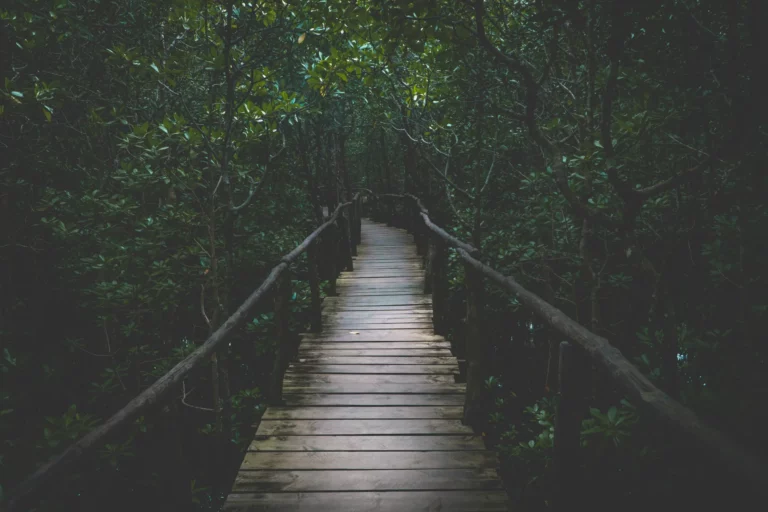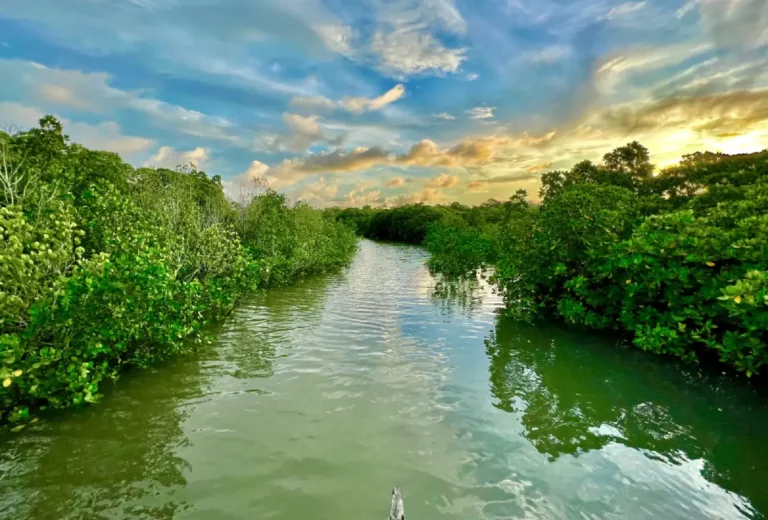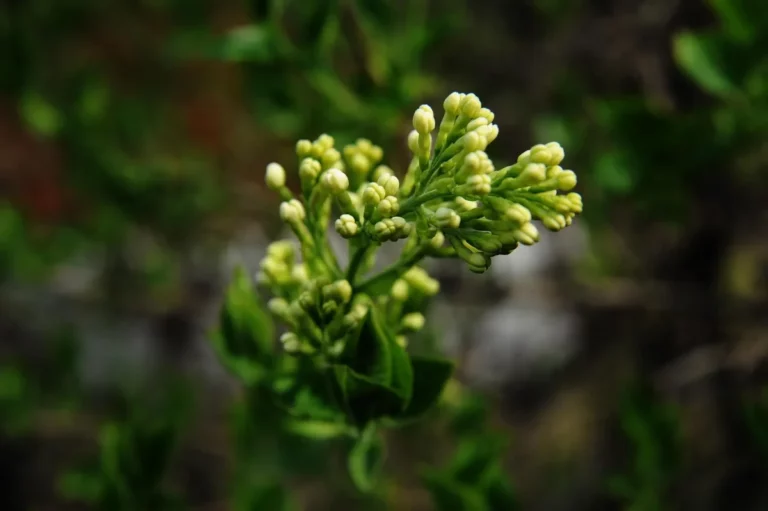Beyond Unguja: Exploring the Hidden Islands of the Zanzibar Archipelago
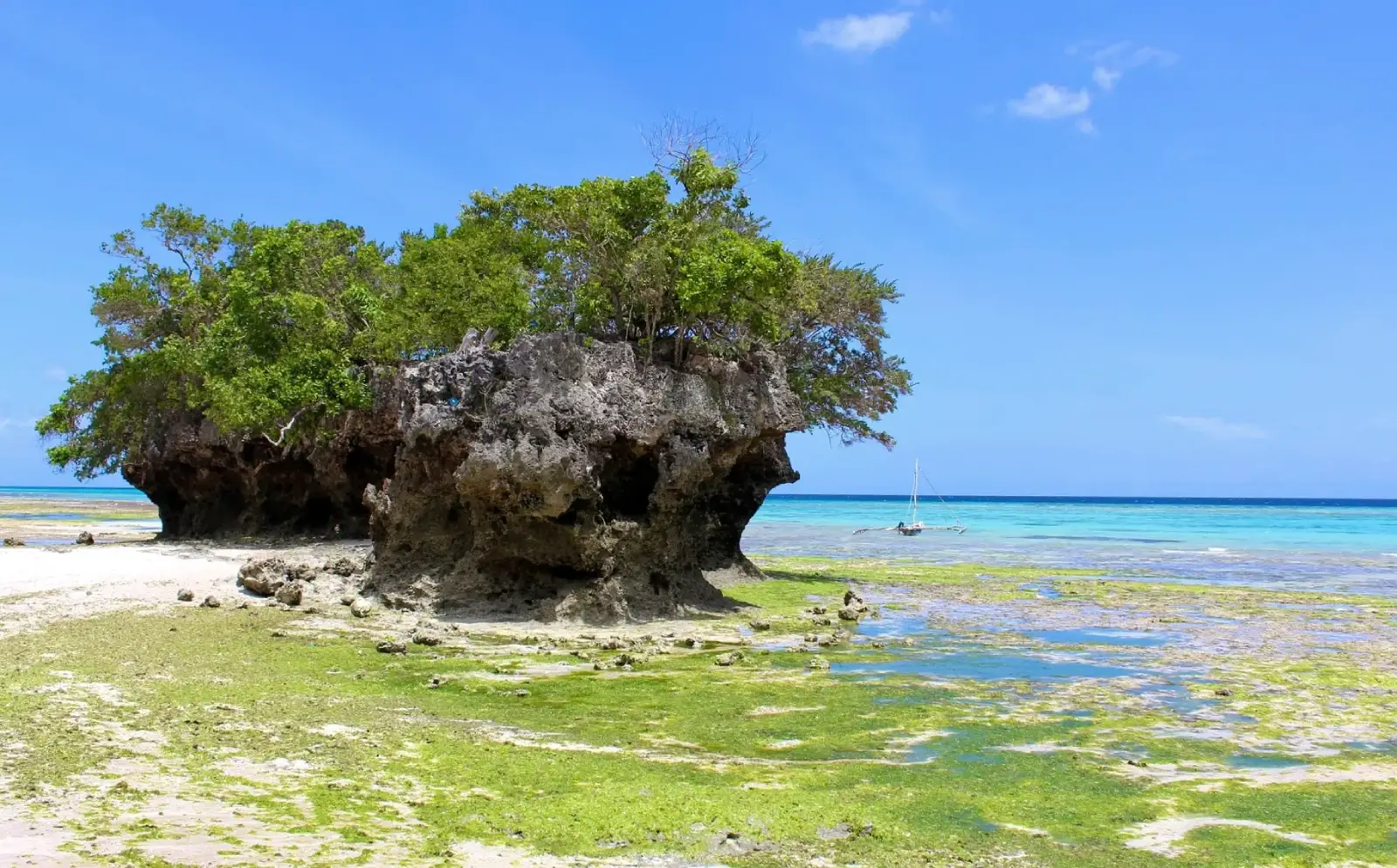
Most travelers know Zanzibar as one island. Some might even name-drop Stone Town, Nungwi, or Paje. But ask about Kojani, Chole, or Tumbatu, and you’re likely to get blank stares and shrugged shoulders.
Welcome to the side of Zanzibar that doesn’t show up on postcards.
Let’s clear something up: what we call “Zanzibar” is really the largest and most famous island in a chain known as the Zanzibar Archipelago. This archipelago—scattered like sea-glass jewels off Tanzania’s coast—is made up of dozens of islands, both inhabited and wild. Technically, Mafia belongs to a separate archipelago and administrative region, but historically and culturally, Unguja, Pemba, and Mafia are considered the big three Swahili islands. Around and between them lie coral outcrops, sacred sandbanks, and Swahili cities lost to time.
These islands are where things get interesting.
So, for the seasoned Africa traveler who’s done the game drives, climbed the volcanoes, and beach-bummed in the usual spots—this one’s for you. Let’s go island hopping, the slow way.
Table of Contents
Pemba Island: The Wild Sister of Unguja
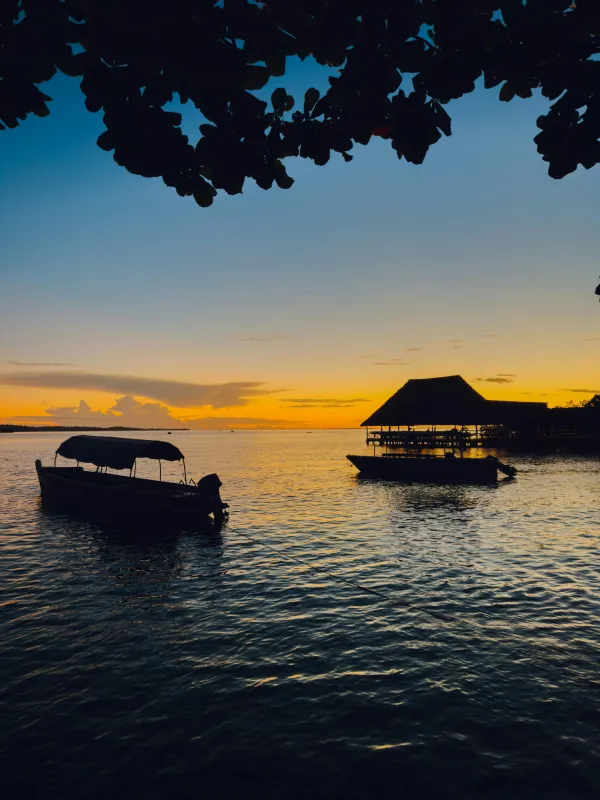
If Unguja is Zanzibar’s glamorous front-facing sibling, Pemba is the quiet one who doesn’t care what you think. It’s green, traditional, and as rich in culture as it is in cloves. This is the island you go to when you want to disappear—in the best way possible.
Vumawimbi Beach
If solitude is what you seek, Vumawimbi Beach delivers it in spades. This stretch of pristine coastline on Pemba’s northeast tip offers soft white sand, shallow turquoise water, and absolute stillness. You won’t find beach bars or sunbeds—just the gentle rustle of palms and maybe a dhow or two drifting across the horizon.
Ngezi Forest Reserve
For those who prefer shade and birdsong to sun and sand, the Ngezi Forest Reserve is a must. This dense patch of tropical wilderness is home to monkeys, rare birds, and the endemic Pemba flying fox—a large, harmless fruit bat with a wingspan that will make you look twice. Quiet trails wind through towering trees, making it an ideal escape for hikers and nature lovers.
Misali Island Marine Conservation Area
Just off the west coast lies Misali Island, a protected marine area that draws divers and snorkelers from around the world. Beneath the surface, you’ll find vibrant coral reefs teeming with tropical fish, sea turtles gliding past like underwater ghosts, and—if you’re lucky—a shy reef shark or two. The island itself is also sacred to local communities, adding a spiritual layer to your underwater adventure.
Chake Chake
At the center of it all is Chake Chake, Pemba’s largest town and cultural heartbeat. This is where you’ll taste spiced cassava chips fresh from the fryer, browse stalls overflowing with cloves and handwoven baskets, and exchange stories with locals who genuinely want to know where you’re from. It’s not polished—but it’s real, and that’s what makes it unforgettable.
Mafia Island: The Diver’s Paradise Nobody Talks About
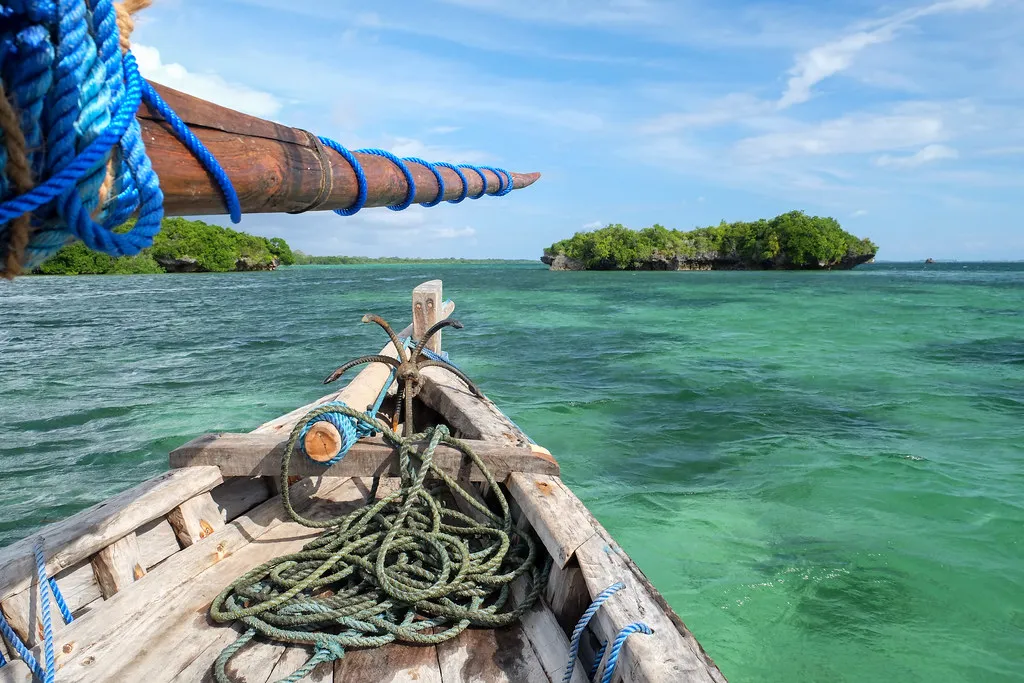
Despite its action-movie name, Mafia Island is a quiet sanctuary of marine life, tradition, and slow, salt-kissed rhythms. Technically, Mafia forms its own archipelago and belongs to a separate administrative region, distinct from the Zanzibar Archipelago. But historically and culturally, it has always stood shoulder to shoulder with Unguja and Pemba as one of the three great Swahili islands.
These islands were once vital nodes in the vast Swahili trading network that stretched from Somalia to Mozambique, and across the Indian Ocean to Arabia, India, and Persia. Mafia, like its northern cousins, was shaped by centuries of maritime trade, Islamic scholarship, and Afro-Arab fusion. Its coral-stone ruins, traditional dhow-building heritage, and deep-rooted Swahili customs reflect the same cultural DNA that binds the whole coast.
So while modern maps may draw different boundaries, the soul of Mafia Island—its rhythms, its stories, its place in East African history—firmly anchors it within the shared legacy of the Swahili Coast.
Diving and Snorkeling
This is what Mafia Island is best known for—and rightly so. The reefs here are among the healthiest in Tanzania, and possibly all of East Africa. You’ll find vibrant coral gardens teeming with life, graceful sea turtles gliding through the water, and if you’re lucky and in season, the majestic silhouette of a whale shark drifting past like a gentle giant.
Chole Island
Just a short dhow ride from Mafia lies Chole Island, a place that feels more imagined than real. There are no cars, no paved roads, and no need for shoes. Instead, you’ll find a close-knit community powered by solar energy and sustained by smiles. Crumbling ruins covered in banyan roots hint at a long history, while treehouses and eco-lodges offer a place to sleep under the stars. It’s the kind of island that makes time irrelevant.
Juani Island
If you’re looking to really disconnect, head to Juani Island. It’s known for its blue lagoon, a serene spot where the water glows a surreal shade of turquoise. Nearby, you’ll stumble upon ancient Swahili ruins, reminders of a once-thriving trade settlement now slowly being reclaimed by nature. Life here runs on a different schedule—slower, softer, and quieter.
Lighthouse Picnic
For a moment of absolute solitude, pack a basket and head to the old lighthouse on the edge of the island. Chances are, you’ll be the only person there. With nothing but sea breezes, salt air, and an empty horizon, it’s the perfect place to snack, sunbathe, and get into long conversations about everything—or nothing at all.
Chumbe Island: Where Conservation Meets Castaway Luxury
Just a short hop from Stone Town, Chumbe Island offers an entirely different kind of escape. This tiny coral island is a protected marine sanctuary and a model of sustainability. It’s not flashy, but it’s quietly extraordinary.
Guided Snorkeling Tours
Snorkeling around Chumbe isn’t just a splashy afternoon activity—it’s an immersive learning experience. Led by marine biologists, tours take you through some of the most pristine coral reefs in the region, where brain coral, angelfish, and sea cucumbers coexist in colorful harmony. You’ll leave with a new appreciation for the underwater world—and more marine knowledge than you bargained for.
Nature Walks
Back on land, the coral rag forest feels like something out of a dream. Gnarled trees and limestone outcrops are home to rare birds and the famous giant coconut crab, which lumbers through the undergrowth like a creature from another planet. It’s a short walk, but rich in detail for those who move slowly and look closely.
Eco Bungalows
When the sun goes down, you retreat to solar-powered, open-air eco bungalows that blend into the landscape without disturbing it. With composting toilets, thatched roofs, and views of the sea, they offer a kind of luxury that doesn’t shout—it whispers. You’ll fall asleep to gecko calls and the steady rhythm of waves, not the hum of air conditioning.
Mnemba Atoll: Zanzibar’s Exclusive Coral Ring
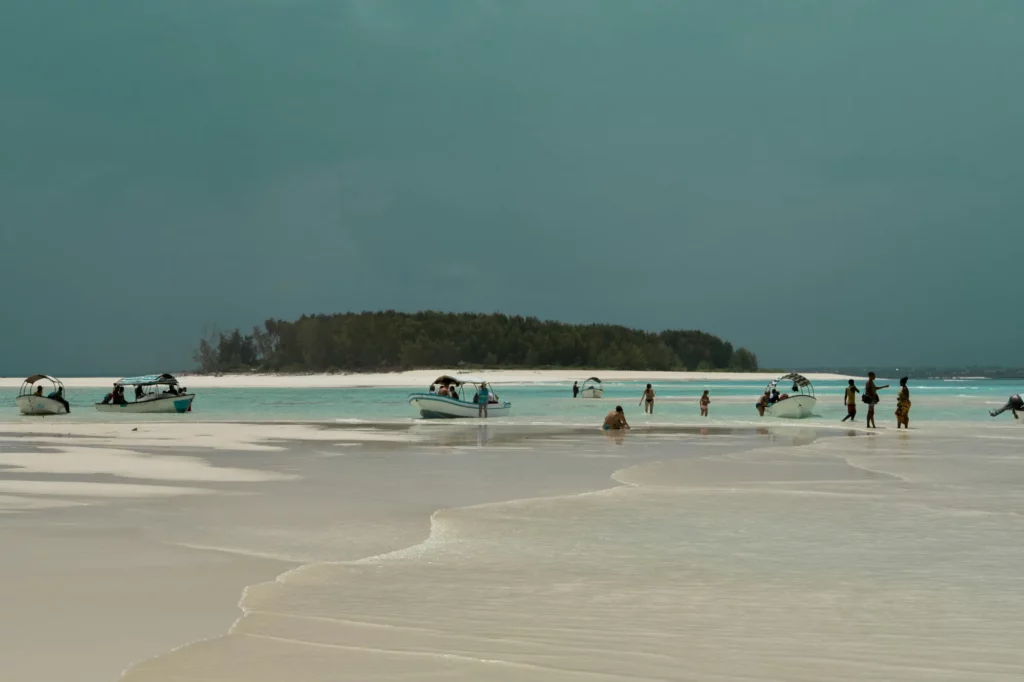
Just off the northeast coast of Unguja, Mnemba Atoll is surrounded by a halo of vibrant coral that makes it one of the best snorkeling and diving spots in Zanzibar.
While Mnemba Island itself is privately owned—home to the ultra-exclusive &Beyond resort—you don’t need a booking to enjoy its surrounding waters. Several local operators offer day trips for snorkeling, often departing from Matemwe, Nungwi, or Kendwa.
Underwater, you’ll find stunning coral walls, thriving reef fish populations, and the occasional pod of dolphins cutting across the shallows. It’s a visual feast for divers and snorkelers alike, with crystal-clear visibility that can reach up to 30 meters on a good day.
Tumbatu Island: Mystery Behind the Forbidden Shores
Tumbatu is only a stone’s throw from Unguja’s northwestern coast, but you won’t find it in the average tour package. That’s because Tumbatu is sacred, private, and largely closed to outsiders.
Ancient Mosques
The island is home to some of the oldest mosques in East Africa, built from coral rag by early Shirazi settlers. These historic structures are unassuming but deeply significant, still used by the island’s inhabitants today.
Oral Histories
This is a place where stories carry weight. Tumbatu is steeped in oral tradition, with tales of spirits, sea gods, and ancestral protectors passed from generation to generation. These stories aren’t performed—they’re lived.
A Community Untouched by Mass Tourism
Visitors to Tumbatu need special permission from village elders. There are no resorts, no guided tours, and certainly no souvenir shops. What you’ll find instead is a fiercely proud community that has chosen preservation over promotion. Tumbatu isn’t a destination—it’s an experience in humility and reverence. This isn’t your average island hopping stop. It’s cultural time travel.
Chapwani and Bawe Islands: Stone Town’s Secret Neighbors
Not all Zanzibar islands are remote and hard to reach. Just a short boat ride from Stone Town lie two overlooked gems—Chapwani and Bawe—perfect for half-day escapes from the bustle of the city.
Chapwani Island
Chapwani has a quiet, contemplative charm. It’s home to a small eco-lodge and a British naval cemetery, where moss-covered gravestones tell stories of colonial sailors who never made it home. It’s not morbid—it’s peaceful. The island also offers good swimming, calm snorkeling spots, and soft sandbanks for lazy afternoons.
Bawe Island
Bawe, nearby, is completely undeveloped—just a spit of sand with surrounding reefs and warm, shallow waters. It’s a favorite with local boatmen and in-the-know travelers who want to snorkel without the crowds. Bring your own gear and supplies; there’s nothing on the island but sun, silence, and sea.
Kilwa Kisiwani and Kilwa Kivinje: Ghost Cities of the Southern Sea
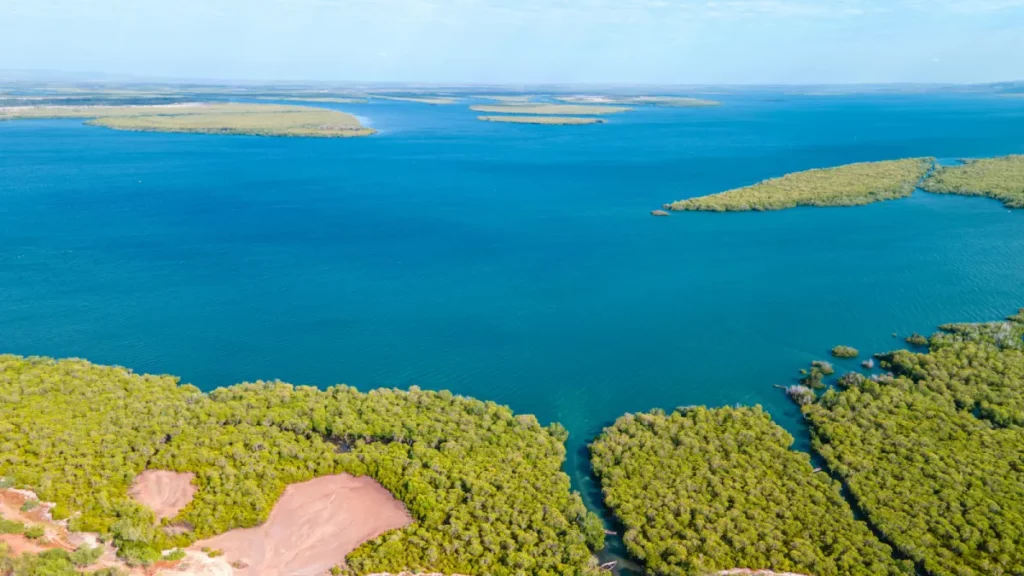
Far to the south, beyond Mafia, lie two islands that once ruled the Swahili coast: Kilwa Kisiwani and Kilwa Kivinje. Though technically part of the Lindi Region, not the Zanzibar Archipelago, they’re culturally and historically linked, and for explorers tracing the Swahili world, they are absolutely essential.
Kilwa Kisiwani, a UNESCO World Heritage Site, was once the heart of a powerful trading empire that dealt in gold, ivory, textiles, and spices. Today, its ruins sprawl across a quiet island like something out of a lost civilization. The Great Mosque, built of coral stone, is one of the oldest in sub-Saharan Africa. The palace complex of Husuni Kubwa, with its massive walls and vaulted rooms, evokes images of a forgotten grandeur that rivaled anything in medieval Europe.
Across the channel lies Kilwa Kivinje, a smaller settlement where you can still see the fading colonial architecture of the German era and the vestiges of a once-thriving Swahili town. Here, life drifts at the speed of the tide. You’ll find sleepy streets, rusting balconies, and a haunting beauty that clings to every crumbling wall.
Reaching Kilwa isn’t easy—you’ll need to get to Kilwa Masoko by road or domestic flight, then take a local boat—but if you’re the kind of traveler who values history over convenience, the reward is unparalleled.
Latham Island (Fungu Kizimkazi): The Forgotten Coral Speck
If you drew a line from Unguja’s southeastern coast and followed it far out to sea, you’d eventually find a flat, bleached reef breaking the surface of the water: Latham Island, also known as Fungu Kizimkazi. This is no tourist destination—it’s a seabird sanctuary, a coral outcrop, and an ecological oddity.
There’s no fresh water, no vegetation, and no permanent human presence. But there are birds. Thousands of them. Frigatebirds, terns, boobies, and others crowd the jagged coral surface, screeching, nesting, and circling in thermals overhead. It’s a vital breeding ground for several species, and a paradise for ornithologists and photographers willing to make the rough journey.
Getting here is a challenge—usually by private charter or scientific expedition. There are no docks. No shelter. Just sun, salt, and the chaotic rhythm of wild seabird life. It’s a humbling reminder of what the sea keeps to itself.
Kidagaa, Kojani, and the Forgotten Isles North of Pemba
The waters north of Pemba are dotted with tiny Swahili islands that rarely make it onto maps or itineraries. Names like Kidagaa, Kojani, and Uvinje are known mainly to locals and the occasional NGO. These places are living museums of traditional island life.
Coral-Stone Villages
In Kidagaa, you’ll find villages where homes are built from coral limestone and thatch, blending into the natural environment. There’s no effort to impress—only to endure. The architecture is shaped by centuries of adaptation to salt, wind, and scarcity.
Seaweed Harvesting
Wade into the shallows and you’ll likely meet women gently gathering seaweed, one of the region’s main economic lifelines. This is slow, tidal work—dependent on moon phases and weather—but essential to livelihoods. It’s also a practice passed through generations, deeply rooted in community life.
Dhows Built by Hand
On beaches in Kojani, men build wooden dhows the traditional way—by eye, by memory, and by rhythm. As hammers hit wood, old Swahili work songs rise into the air. There’s no machinery, just skill and song. It’s not a performance—it’s their Tuesday.
Children in the Mangroves
During low tide, children dart barefoot through the mangrove roots, chasing crabs and teasing each other as they splash through mud and shallow pools. It’s a scene that’s timeless, uncurated, and full of joy.
There are no resorts here. No infrastructure. If you go, go with respect. Ask first. Go through local guides or NGOs. And remember: these islands don’t exist for your entertainment. You’re a guest in someone else’s world.
Island Hopping Tips for the Zanzibar Archipelago
Island hopping in Zanzibar isn’t quite like leaping between the Greek isles or cruising through Thailand’s tropical chains. The boats here are a little slower, the schedules a bit looser, and the logistics can test your patience. But if you’re not just chasing convenience—if you’re after authentic, immersive adventure—then you’re exactly where you need to be.
When to Go
The dry season from June to October is the best window for island travel. You’ll get cooler winds, calm seas, and mosquito-net nights that don’t feel like saunas. It’s perfect for dhow trips, forest hikes, and days that blend one island into the next. If you prefer hot, clear skies and brilliant underwater visibility, then December to February is your sweet spot—especially if you’re hoping to see whale sharks around Mafia, which often show up in these months.
Between March and May, however, things get wetter. These are the long rains, and they come with thunderstorms, unpredictable seas, and transport delays that may have you marooned (in a poetic way, if you’re lucky). It’s not for everyone—but if you’re bold and flexible, you might just get whole beaches to yourself.
How to Get Around
For longer jumps, domestic flights are your friend. Carriers like Coastal Aviation, Auric Air, and smaller operators run flights between Unguja, Pemba, Mafia, and even Kilwa (via Lindi). These flights aren’t always daily and can book out, so planning ahead is essential.
Closer island links are made by local ferries, private dhows, and the occasional speedboat. Just know that the farther off-grid you go, the more likely you are to end up bailing water from the boat or waiting for a captain who’s operating on island time. Stick with operators who know the currents, the reefs, and the routes—your life jacket isn’t always the most reliable piece of equipment on board.
If you want to travel the old-fashioned way, consider a dhow sailing safari. Some outfitters offer multi-day expeditions that take you from island to island, camping under stars, fishing for dinner, and waking up to sunrises that feel prehistoric. It’s rustic. It’s real. And it might be the most unforgettable way to experience the Zanzibar Archipelago.
What to Pack
Packing light is key, but don’t skimp on essentials. A dry bag will save your phone, passport, and dignity when things get splashy. A solar charger is worth its weight in gold when you’re off-grid and the power’s out—again. In more conservative communities, you’ll want to wear modest clothing, especially when walking through villages—think covered shoulders and knees, even if it’s 30°C in the shade.
Reef-safe sunscreen is a must if you plan to snorkel or swim (and you should). Bring your own snorkeling gear if you’re particular—some local boats will hand you a cracked mask and hope for the best. Better to be prepared than to learn how to clear a leaky snorkel mid-dive.
Cultural Respect in the Lesser-Known Islands
The deeper you go into the Zanzibar Archipelago, the more you’ll find yourself stepping into communities that have remained remarkably intact—not because they’re isolated, but because they choose preservation over performance.
In places like Tumbatu, Kojani, and Kidagaa, culture isn’t something put on for show. It’s lived. That means visitors should arrive with a mindset of respect and humility.
Always ask before taking photos—especially of people. In many of these Swahili island communities, modesty and privacy are paramount. Dress conservatively, particularly when entering villages or sacred spaces. Women should cover shoulders and knees, and men should avoid sleeveless tops.
Don’t assume you’re entitled to access. Some islands, like Tumbatu, require explicit permission from village elders before visitors are allowed to land. And even if you’re granted access, understand that you’re walking into someone’s ancestral homeland—not a museum exhibit. Be present. Be polite. And leave nothing behind—physically or culturally.
The Forgotten Rhythms of Island Time
If there’s one thing that unites all the hidden islands of Zanzibar, it’s the rhythm of island time. Not the schedule printed on a ferry ticket, but the real kind—the kind that follows the tides, the position of the sun, and the moment someone decides to finish their tea.
On Chole Island, time is measured by the whisper of sea breezes through mangroves and the ring of a bicycle bell on a coral path. In Kojani, a conversation might stretch for hours under the shade of a baobab tree before anyone even glances at a clock—if they own one at all. This is not inefficiency. It’s intentional presence.
Embracing this slower rhythm isn’t just a travel strategy—it’s a recalibration. The hidden islands remind you to watch how light hits the ocean at 5 p.m., to taste the salt on your lips after a swim, and to listen—really listen—when someone starts telling a story that begins with “long ago…”
Want to connect? Then slow down. Put the camera away for a bit. Share tea, trade stories, and let the place show itself in its own time.
The Archipelago That Keeps on Giving
So yes, Unguja is glorious. The sunsets in Nungwi, the swirling aromas of Stone Town spice markets, the kitesurfers dancing over Paje’s turquoise shallows—it’s easy to fall in love with Zanzibar’s main island. But beyond Unguja, the Zanzibar Archipelago holds more secrets than a spice chest tucked behind a dhow captain’s bedroll.
These islands are scattered stories—some whispered by sea winds, others etched in crumbling coral walls or sung in village songs under starlit skies. Whether you’re diving off the reefs of Mafia, wandering the ancient Swahili ruins of Kilwa, tracing turtle tracks on Mnemba’s coral shelf, or sipping strong black tea with seaweed farmers on Kojani, you’re not just island hopping—you’re stepping into living, breathing history.
And not the polished kind. Not the “sanitized-for-tourism” version with hashtags and staged dance shows. These are tales told barefoot, with laughter, under thatched roofs and by lantern light. They’re real, raw, and rare—the kind of experiences that etch themselves into your memory long after your passport is stamped and your tan fades.
This isn’t just travel. It’s connection. It’s learning the rhythm of a place that refuses to be rushed. It’s discovering that the further off the map you go, the more of yourself you find.
Karibu visiwani. Welcome to the islands. Welcome to a different kind of Zanzibar.



